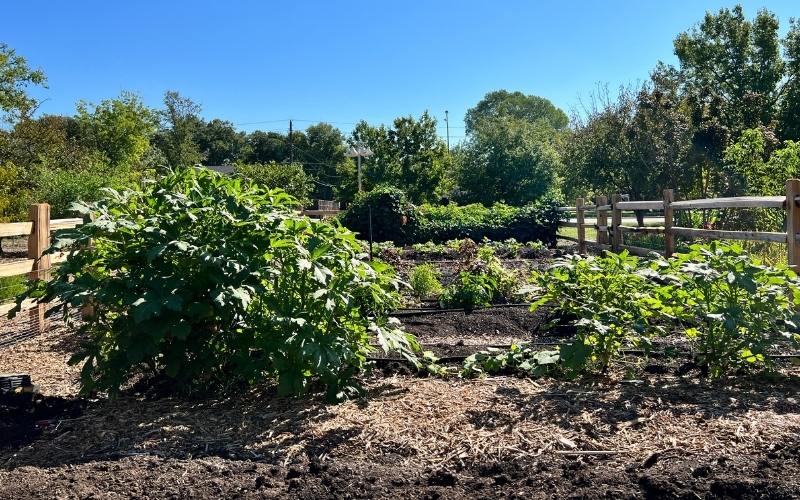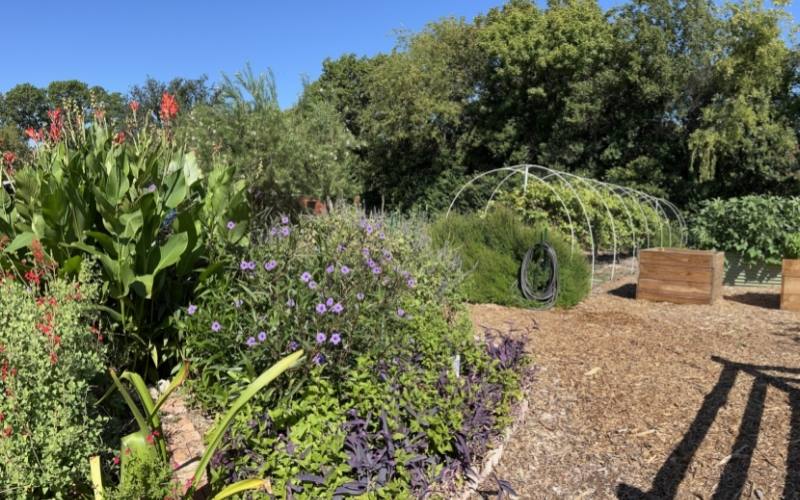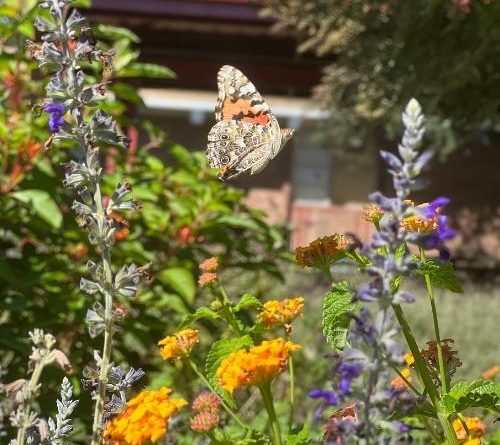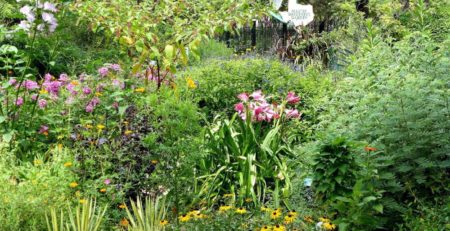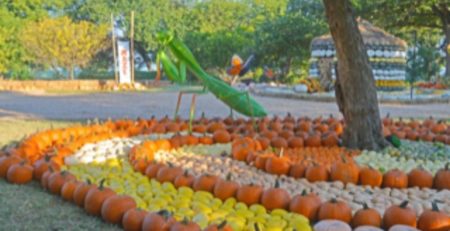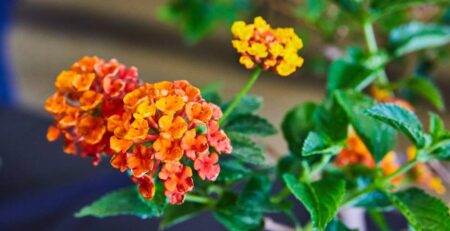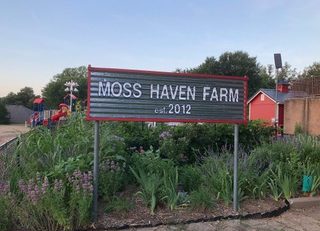Raincatcher’s Garden of Midway Hills
Raincatcher’s Garden of Midway Hills is one of two Dallas County Master Gardener (DCMG) research, education, and demonstration projects. It started in 2005 as an Earth-Kind®, WaterWise Demonstration Garden on Joe Field Road near Royal Lane and I-35, but it was relocated to the campus of Midway Hills Christian Church at 11001 Midway Road almost eight years ago. It’s hard to believe the move was so long ago, but one look at the mature gardens proves it’s true.
The mission of the Raincatcher’s team (Raincatcher’s) has always been to educate the public on Earth-Kind® gardening practices (https://aggie-horticulture.tamu.edu/earthkind/) that conserve water and are environmentally sustainable. These practices include proper soil preparation and plant selection that are demonstrated through adult classes, garden tours, school field trips, and a working garden. In 2021, Raincatcher’s added another focus to its stated mission: growing fruit and vegetables to help alleviate food insecurity in the community.
While the pandemic limited outreach activities, Raincatcher’s started growing vegetables again in its north garden. The soil in the raised beds was rich from years of amendment with compost, and the harvests of onions and spinach were so nice, a decision was made to donate them to a food bank. That was the beginning of the vegetable team’s obsession with growing fresh food for those served by North Dallas Shared Ministries. They started putting together attractive family packs, with mixtures of whatever was growing (greens, okra, cucumbers, peppers, tomatoes), and donated them. The team added a workday to accommodate enthusiastic volunteers with an interest in growing vegetables and decided to expand the garden to grow more.
To expand capacity, Raincatcher’s created a new donation garden with the help of the DCMG Class of 2021. The donation garden is an in-ground, ridge and furrow garden in an area left uncultivated after a Texas A&M AgriLife rose rosette research trial was completed. Raincatcher’s also repurposed five 10×20 foot beds that had once demonstrated turf grasses. The beds were sheet mulched (https://twri.tamu.edu/media/5429/sheet-mulching-17×11-v2_reorg2.pdf) to eliminate the turf grasses. When the grass in one bed proved resistant to sheet mulching, it was solarized (https://agrilifeextension.tamu.edu/asset-external/soil-solarization/) to eliminate most of the remaining grass. Finally, the area was enclosed with an attractive split-rail fence outfitted with rabbit wire [thanks to the generosity of the Dallas County Master Gardener Association (DCMGA)]. Irrigation is currently being installed to ready these beds for planting.
The original raised vegetable beds at Raincatcher’s, made of wood, were falling apart and needed to be replaced. Some of the beds were reconstructed with treated lumber while others were rebuilt with lumber and planter wall blocks. Ultimately, however, Vego beds (https://vegogarden.com/collections/garden-beds) were purchased to replace the remaining structures. Despite costing more than lumber, the ease of installing Vego beds and their expected lifespan of 20 years made this an economical decision.
Raincatcher’s takes their role as a demonstration garden to heart, but sometimes they wind up demonstrating how NOT to grow something. For example, their fall tomatoes had to be replanted three times. The third planting was successful because the plants were allowed to acclimate to summer sun under shade cloth for a longer period; and supplemental water was provided after a problem with the irrigation system was discovered. Each season brings new challenges and Raincatcher’s does their best to build on what they have learned and increase production despite rabbits, squash borers, and 110 degree temperatures. There have been surprises, too, like the cantaloupes that were planted as an afterthought but wound up being the most successful crop of the year so far.
Raincatcher’s proudly joins other DCMG projects, notably Temple Emanu-El’s Jill Stone Community Garden and R&B 1 Urban County Farm, in donating their harvests. They are also very grateful for the assistance received from DCMGA and our volunteers, including interns from the DCMG classes of 2021 and 2022, to increase their outreach to the community.
In addition to the vegetable gardens, Raincatcher’s manages and cares for over 500 plant varieties in a number of other garden areas:
- The North Garden includes:
- Pollinator Garden
- Color Wheel
- Fruit Orchard
- Mixed Border
- Landscape Trees
- Wildflowers
- Foundation Memorial Beds
- The Shade Pavilion
- Composting
- The Central Garden includes:
- Rain Garden
- Shade and sun beds in the Courtyard Terrace
- A large Edible Landscape
- A Greenhouse
Follow Raincatcher’s blog at dallasgardenbuzz.com to learn about their educational agenda of lectures, tastings, and tours of the garden in 2023. Posts about gardening in north Texas are written by Master Gardener (MG) volunteers. They provide garden-inspired recipes and decorating ideas as well.
MG volunteers are on site at Raincatcher’s every Monday and Tuesday from 9:00 a.m. until noon. As with other DCMG projects, this project is anxious to return to the volunteer levels they experienced pre-pandemic. Fall is the most glorious season in the perennial garden, and Raincatcher’s offers something for almost everyone, including a number of volunteer opportunities that don’t require physical exertion. In particular, the project is looking for a volunteer team to help schedule educational speakers and community outreach. If MGs want to participate, they can just show up on a workday or reach out to the project leaders. The project leaders’ contact information is available on DCMGA’s Members Only website under MG Resources (https://dallascountymastergardeners.org/wp-content/uploads/2022/01/DCMGA-Project-Contacts-22-with-logo-PDF.pdf).

